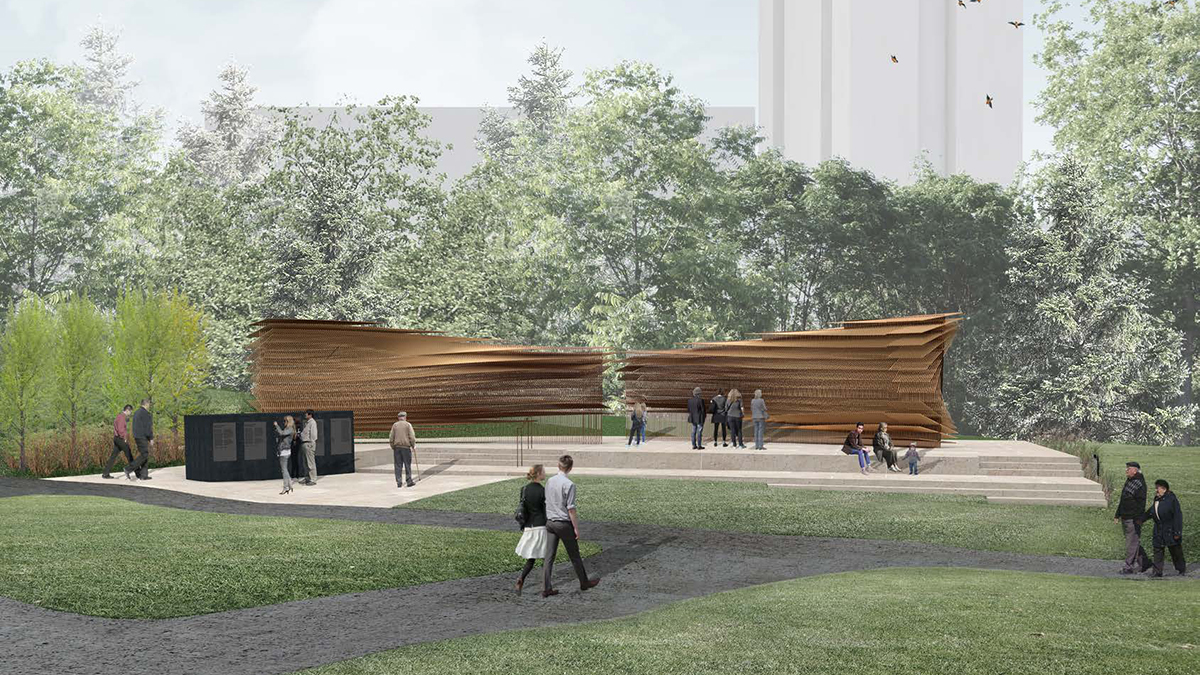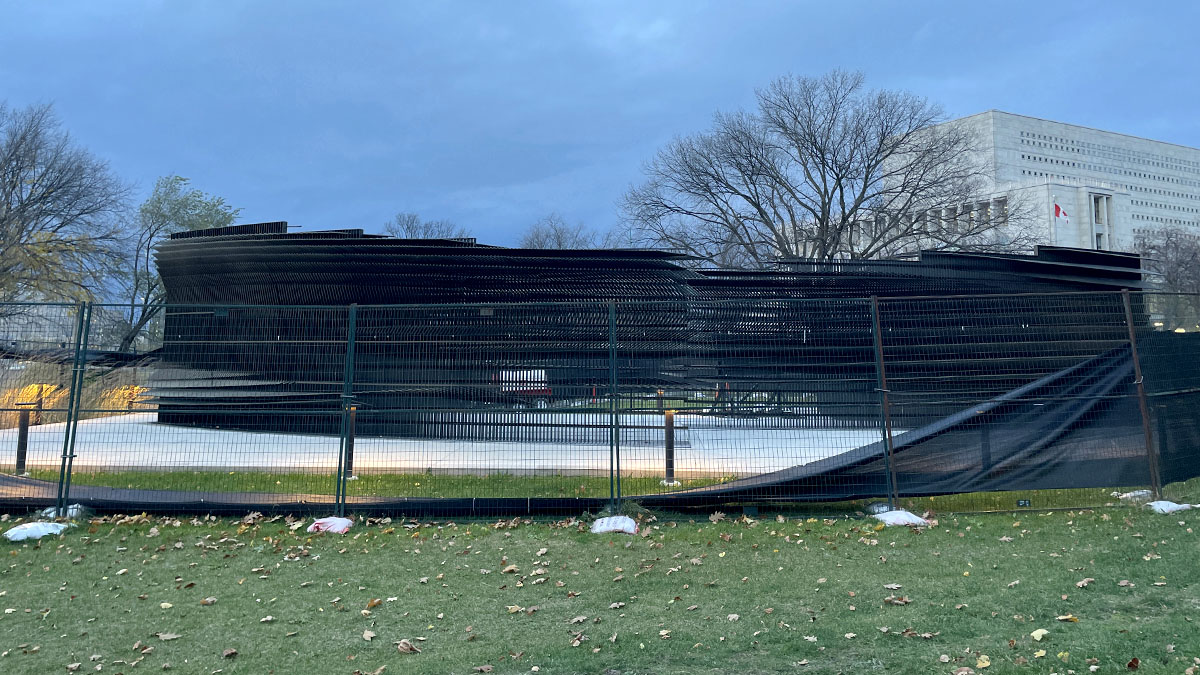Near the Garden of the Provinces and Territories in downtown Ottawa, is a striking installation that most passersby can’t actually see. For now, all that’s visible is a black fence.
But the public should see Canada’s Memorial to the Victims of Communism instead of the fence. Fifteen years since inception and five years since breaking ground, the $7.5 million monument awaits its dedication.
The monument was conceived in 2008 when Jason Kenney, then minister of state for multiculturalism, proposed the idea. Months later, the charitable organization Tribute to Liberty was created to fundraise for the project.
On Sept 21, 2023, the official account of Tribute to Liberty posted a video on Facebook suggesting that the monument was completed on that day and announcing an unveiling ceremony for Nov 2, 2023.
What happened in the House of Commons the very next day has put the monument on hold.
Yaroslav Hunka, a 98-year-old veteran of the Second World War, was invited to a ceremony in the House of Commons by then-speaker Anthony Rota to honour visiting Ukrainian president Volodymyr Zelenskyy. During the ceremony, Hunka received two standing ovations. Later was it discovered that Hunka had served with Nazi Germany’s 14th Waffen-SS Division, members of which have been accused of committing war crimes against Jews and Poles.
The scandal led to Rota’s resignation, but the memorial was put on hold as Canadian Heritage started “doing its due diligence to ensure all aspects of the memorial remain compatible with Canadian values on democracy and human rights.”
The postponement is another twist in the monument’s long and contentious journey.
From the start, controversy swirled around its location, design and even its name.
In August 2013, the government announced a site on Wellington Street, between the Supreme Court and Library and Archives Canada.
This decision provoked backlash, as the site had previously been designated for a new judicial building. Among the critics were the Supreme Court Chief Justice, the Royal Architectural Institute of Canada, and the Institute of Planners.
With the election of a new Liberal government in 2015, the NCC announced the monument would have a different site and a new design.
And recently it was revealed that half of the names submitted for the monument’s commemorative list had Nazi affiliations.
Michael Petrou, Carleton University history professor, wrote a report for Canadian Heritage in 2021, in which he warned that “a Wall of Remembrance that honours all the victims of Communism named in this document will attract controversy and criticism. Several of the named victims were fascists and Nazi collaborators or belonged to groups that might be described as such.”
For some, the possibility of inadvertently honouring Nazis and their collaborators seemed almost inevitable from the very beginning.

“I am not surprised at all,” said Gregor Kranjc, Associate History Professor at Brock University.
In 2015, Kranjc was among the first to raise concerns about the potential for the memorial to inadvertently honour Nazis. His research on Nazi collaborators during the Second World War has made him sensitive to the risks of this memorial.
Canada has a complicated legacy of resettling individuals with affiliations with the Nazis post-Second World War, many from Eastern Europe. Even today, several monuments commemorating Nazi collaborators remain in Canada.
The broader challenge for the monument boils down to one simple question with no easy answer: how does Canada define the victims of communism?
The Memorial to the Victims of Communism didn’t attempt to define who the victims of Communism were, except for the vague description of “the millions who suffered under communist regimes.”
While many who fled communist regimes were seeking political freedom, it is a consensus among historians that some had complicated pasts as collaborators. And collaborators often use the suffering inflicted by communism to rationalize their past.
“Collaborators would justify some of the atrocities and violence that they committed by saying ‘no, we were not fighting for Hitler, we were fighting against communism,’” said Kranjc, adding that although the Nazi collaborators and the “real victims” were persecuted by communist regimes, the two groups “have to be divided and distinguished.”
Tribute to Liberty’s chair of the board of directors, Ludwik Klimkowski, said that at this point his organization is “not in a position to comment” on the commemorative list.
Kranjc said that historical monuments are usually not designed in a nuanced way, thus presenting a challenge to public understanding of complicated history.
He suggests that a museum or educational exhibit is a better means of conveying the nuanced legacies of communism and fascism than a static monument that risks lionizing controversial figures.
Ines Akué, a spokeswoman for Canadian Heritage, confirmed that the department is reviewing the names and events proposed by Tribute to Liberty. According to Akué, Canadian Heritage “cannot provide further details … until the conclusion of the review process.” It is worth noting that according to the Canadian Heritage website, the memorial will be inaugurated in 2024.
She added that any future commemorative projects under the purview of Canadian Heritage would follow the Policy on National Commemorative Monuments whose objective is to ensure that such commemorations reflect the rich and diverse history and accomplishments of the people of Canada and Canada’s national identity.
But Caroline Czajkowski, a media relations representative for Canadian Heritage, confirmed the inauguration is still under discussion with Tribute to Liberty and “a date will be announced in due course.”




